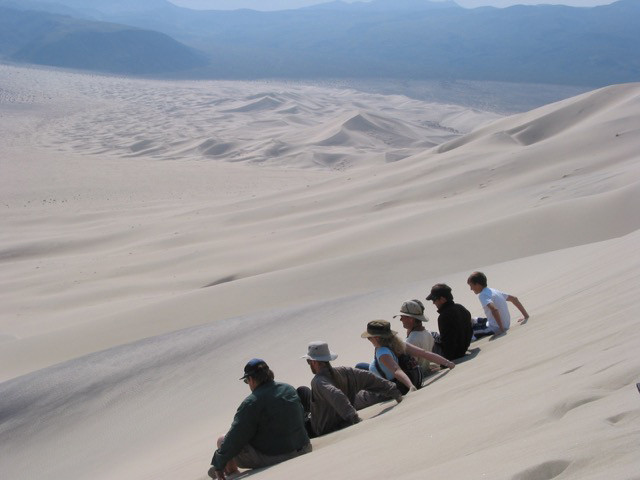Death Valley sand dunes: Caltech scientists analyse 'booming' and 'burping' sounds

Sand dunes in the Death Valley National Park and the Mojave Desert make booming and burping sounds when small sand avalanches occur, so researchers from the California Institute of Technology and the University of Cambridge set out to discover why. The dunes give off a sound frequency that ranges from 70 to 105Hz, while the low-frequency noises correspond to the waves within the dune, the study states.
The team wanted to know how the noises are able to travel through the sand. Nathalie Vriend researched this phenomenon as a PhD student at the California Institute of Technology. She said: "During approximately 25 individual summer field days, on very hot and sandy dunes in California, we probed booming dunes. We measured the wave propagation characteristics, which include the motion of grains and frequency and energy of the emitted sound. This, in turn, revealed that booming and burping are two different, but related, phenomena."
Using geophones to measure seismic vibrations in the ground, Vriend, along with Melany Hunt, a professor of mechanical engineering at the same university, "measured the wave propagation characteristics, which include the motion of grains and frequency and energy of the emitted sound". Vriend said: "This, in turn, revealed that booming and burping are two different, but related, phenomena."
The team learned that although the booming and burping sounds both have surface and volumetric signals present, the dominant signals are different.
Writing in Physics of Fluids, Vriend added: "The waves travelling through the dune move individual grains of sand, which exert a force on the geophone that we use for measurements," but the "burping sounds correspond to a surface Rayleigh wave, travelling radially along the surface of the dune in a nonlinear manner. This means that relations between these properties are complicated because of the influence of individual grains." While the booming sounds originate from "linear P-waves that travel volumetrically and are reflected from internal layers inside the actual dune."
© Copyright IBTimes 2025. All rights reserved.






















